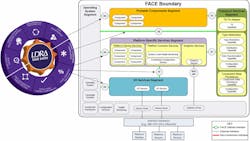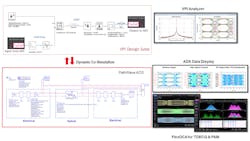The Latest in Software Advancements for 2021
While the latest hardware may receive the most attention in terms of new releases, software plays a significant role in its design and utilization. Product design, R&D, testing, and product applications are all software-enabled, and just as hardware evolves for increased power and efficiency, software follows suit with new features, toolsets and abilities. In this roundup, we will take a look at the latest software innovations that have been released in 2021.
Ultra Librarian recently announced its collaboration with Zuken Inc. to provide eCADSTAR users with a seamless process to search and download parts. The eCADSTAR platform provides a borderless PCB design environment that connects the engineering desktop with comprehensive online design, manufacturing services, and online educational content. With a direct Ultra Librarian integration, users can browse parts, download, and design directly within the eCADSTAR environment, saving time and increasing productivity. What's more, users can use in-house tools or utilize 3rd party apps and services, including PCB Design Editor, Library Editor, Schematic Design Editor, and more.
Keysight has announced a new version of its Nemo Handy handheld measurement software aimed at Android-based commercial off-the-shelf (COTS) smartphones for verification of 5G new radio (NR) quality-of-service (QoS) and quality-of-experience (QoE) in the field. The Nemo Handy platform now includes a plug-and-play set-up when switching from one 5G COTS smartphone to another to initiate a new series of measurements. It also features extended measurement functionality with voice quality testing across different 5G devices and support for up to two devices via Keysight's new Nemo Diagnostics Module and chipset diagnostic software for comparable measurements between different vendors.
LDRA recently launched its new tool suite for FACE (Future Airborne Capability Environment) for cost-effective software development and evaluation. The LDRA tool suite automates the process of evaluating software for conformance with each version of the FACE standard (e.g., version 2.1.1 and 3.0) while simultaneously enabling developers to improve their software quality via traceability, static and dynamic code analysis, and unit and system-level testing. New features and capabilities include integrating the 2.1.1 and 3.0 FACE Conformance Verification Matrix (CVM), test management of the FACE coding standard, addressable FACE segments, traceability from architectural segments, and automated analysis. It also includes automated documentation generation, static and dynamic code analysis, and more.
Samsung Electronics has announced that it has brought the latest software innovations to its PCIe Gen4 solid-state drive (SSD) series for maximized storage performance using key software technologies. The latest software innovations include fail-in-place (FIP) technology that allows the SSD to keep functioning even when errors occur, virtualization technology that provides independent virtual workspaces that can be subdivided (up to 64 smaller SSDs) for multiple users, and V-NAND machine learning technology, which utilizes big data to verify cell characteristics even when operating at ultra-high speeds. The three software innovations are included with Samsung's latest PCIe Gen 4 SSDs and NVMes.
Keysight Technologies recently announced a new simulation workflow capability that seamlessly connects Pathway Advanced Design System (ADS) with VPI Design Suite (VPIphotonics), allowing designers to predict the signal integrity of EOE (Electrical-Optical-Electrical) data links. The VPI Optical Link solution in PathWave ADS simulates and optimizes design parameters simultaneously in electrical and optical domains, eliminating critical barriers to developing high-performance hardware products. The electro-optical workflow can process millions of bits of data in minutes for accurate BER prediction. This allows system architects to investigate link performance characteristics with varying fiber lengths, effects of distortion/dispersion, optical drive level, electrical transmitter and receiver equalization settings. It also provides insight into electrical channel design, including trace routing and the design of PCB vias.
About the Author
Cabe Atwell
Technology Editor, Electronic Design
Cabe is a Technology Editor for Electronic Design.
Engineer, Machinist, Maker, Writer. A graduate Electrical Engineer actively plying his expertise in the industry and at his company, Gunhead. When not designing/building, he creates a steady torrent of projects and content in the media world. Many of his projects and articles are online at element14 & SolidSmack, industry-focused work at EETimes & EDN, and offbeat articles at Make Magazine. Currently, you can find him hosting webinars and contributing to Electronic Design and Machine Design.
Cabe is an electrical engineer, design consultant and author with 25 years’ experience. His most recent book is “Essential 555 IC: Design, Configure, and Create Clever Circuits”
Cabe writes the Engineering on Friday blog on Electronic Design.






